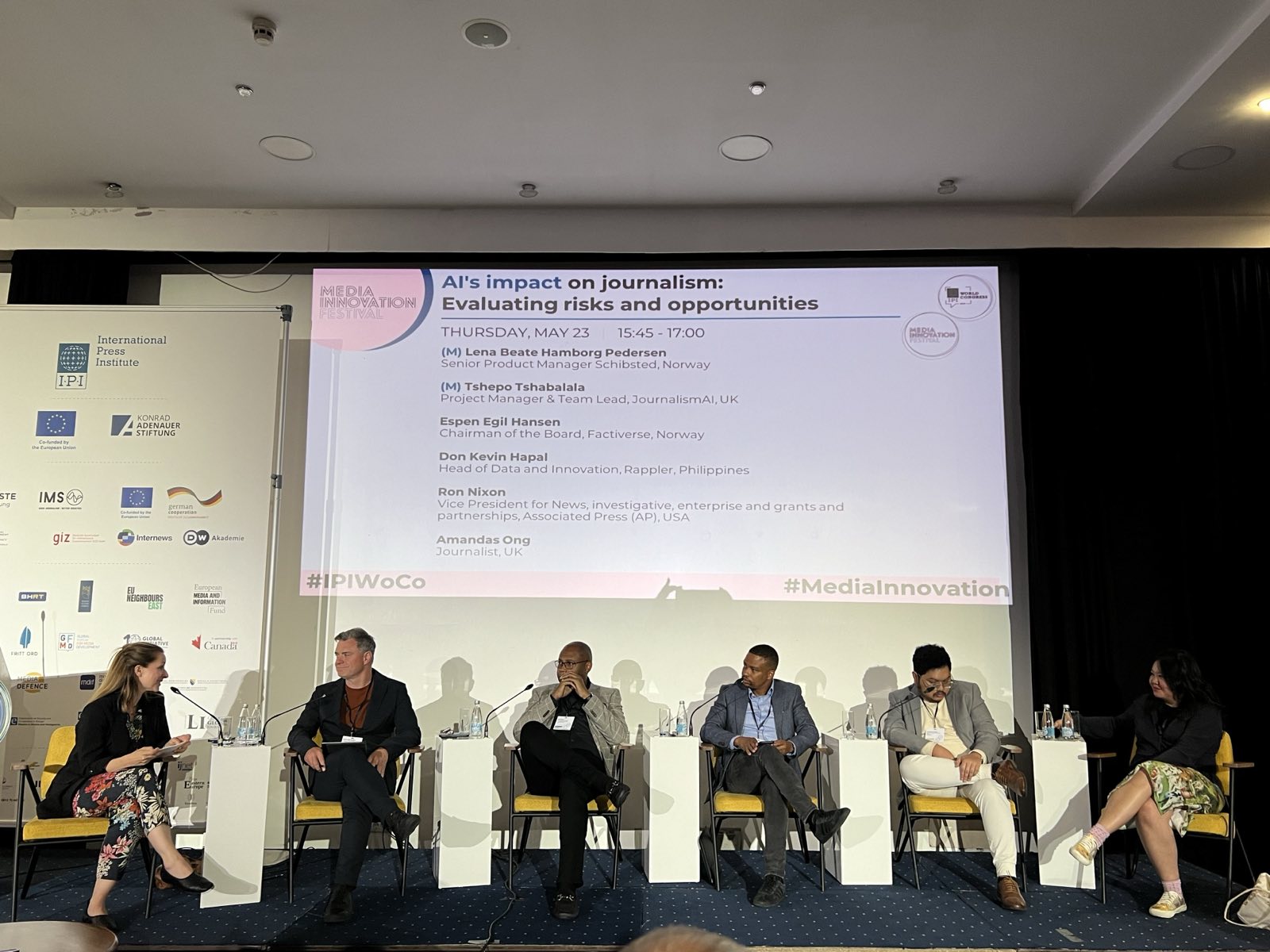The new offer of tools and resources powered by large language models has sparked a wide range of perspectives within newsrooms – some good, like the promise of enhanced productivity, some bad, like concerns about misinformation and job displacement.
Leaders in the journalism industry shared their insights on such perspectives in a panel titled AI’s impact on journalism: Evaluating risks and opportunities during the 2024 Media Innovation Festival in Sarajevo.
The top two areas where AI has been mostly used in newsrooms, small and large, is across news production and news distribution, but not all have figured it out how to use AI in news gathering.
The panelists were clear: AI should complement, not replace, journalists. By automating routine tasks and enhancing data accuracy, AI-powered tools can free up journalists, allowing them to focus on in-depth reporting and creative storytelling. However, transparency in AI usage is paramount to maintaining public trust.
“AI is a set of many technologies and tools, and can be approached in many ways”, said Espen Egil Hansen, said chairman of Factiverse, a fact-checking organization in Norway. “We must use it to strengthen journalism to be unique and accurate.”
We have to educate the difference between synthetic media, made by machines […] and be transparent about what we do as journalists. Use AI where it helps, but show how unique we are in our approach.
As the journalism industry continues to navigate the integration of AI, the key lies in balancing technological advancement with journalistic integrity. AI, when used responsibly, can significantly enhance the quality and reach of journalistic work, ensuring that the core values of accuracy and trust remain intact.
“How do we take of some things off the journalists’ plates so that they can focus on high-value work?”, asked Don Kevin Hapal, head of data and innovation at Rappler, an award-winning news organization from the Philippines. “People care about content integrity.”
He also discussed Rappler’s dual strategy of defending against AI threats and leveraging AI for journalistic endeavors. For instance, during the 2022 elections, AI helped build a comprehensive knowledge graph of political dynamics in the Philippines, showcasing the potential for working on data-intensive tasks with the help of technology.
AI for accessibility
Integrity is an important part of journalists’ experiments with AI, but this leads to another big issue facing digital news organizations: how to use these tools to make journalism more accessible?
Lena Beate Pedersen, senior product manager at Schibsted, Norway, emphasized the importance of using AI to translate articles into multiple languages, enabling broader accessibility. This is crucial for reaching diverse audiences, including those with dyslexia, as well as younger readers who prefer concise summaries or audio content. If organizations choose that way, she said, they should also care about transparency in the ways they are using those resources.
Accessibility also means using tools to develop data visualizations. Amandas Ong, a journalist in the United Kingdom, shared an intriguing project from 2023, where Al Jazeera used AI to reconstruct images of Palestinian villages, aiming to transport audiences to the early 1940s. This project underscored the importance of corroborating facts before visualization, ensuring accuracy in AI-generated content.
“You need to have a place to begin and cannot compromise on veracity”, she cautioned. “Memory is slippery, so from the beginning we established that we were only going to visualize the information that we could corroborate.”
AI as a supporting tool
As useful as AI can be when creating content, most often it can help journalists avoid tedious, repetitive tasks, like document scanning, real-time transcription, and social media scraping for news alerts, said Ron Nixon, Vice president for news, investigative, enterprise and grants and partnerships at the Associated Press (US).
Despite initial resistance due to job security fears, he said, many reporters have embraced AI for automating tedious tasks, allowing them to focus on core journalistic work (even so, the AP does not allow journalists to actually produce content with AI).
“These are just tools. It’s not like Skynet and The Terminator, that will take over humanity… that is not going to happen”, he said.
>> Watch the innovation panels live on IPI’s YouTube channel.

